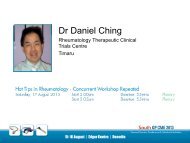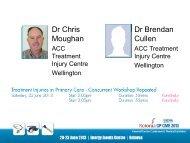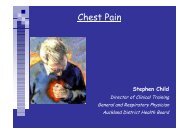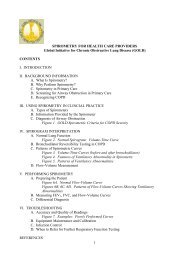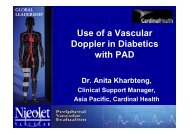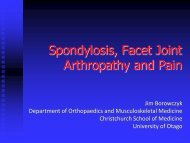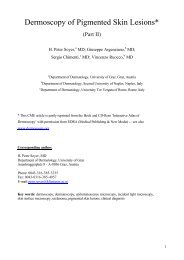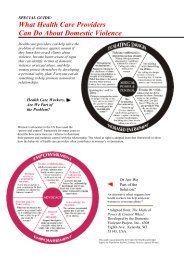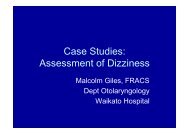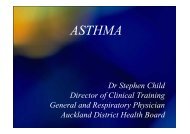DOWNLOAD GP CME 2010 PROCEEDINGS BOOKLET (18mb PDF)
DOWNLOAD GP CME 2010 PROCEEDINGS BOOKLET (18mb PDF)
DOWNLOAD GP CME 2010 PROCEEDINGS BOOKLET (18mb PDF)
You also want an ePaper? Increase the reach of your titles
YUMPU automatically turns print PDFs into web optimized ePapers that Google loves.
72<br />
Main Programme<br />
Friday 10th June 2011<br />
Main Programme<br />
Dr Rick Cutfield<br />
Controversies in Diagnosis of Diabetes<br />
Friday, 10 June 2011 Start 9:00am Duration: 25mins Baytrust Forum<br />
The diagnosis of diabetes mellitus has important implications for patients and their doctors. For decades<br />
the diagnosis of diabetes has largely been based on either the fasting plasma glucose or the results<br />
of the oral glucose tolerance test. In 1997, criteria were revised and based largely on the correlation<br />
between fasting plasma glucose and the earliest signs of retinopathy, a fasting glucose of 7mmol/l was<br />
used as a new threshold for diabetes. Various categories of “pre-diabetes” including impaired glucose<br />
tolerance and impaired fasting glucose were introduced. The HbA1C blood test, which reflects average<br />
blood glucose levels over a 2 -3 month period, was largely used to monitor glucose control. However,<br />
it has now been proposed as a diagnostic test. HbA1c has the advantages of not requiring fasting and<br />
correlating well with the risk of macrovascular disease and is reasonably standardised in most western<br />
countries. However, there are potential issues with AIC as well. While the various international diabetes<br />
groups debate the criteria, I will present a practical proposal for us to use in the meantime using the<br />
new international numbers. The new criteria may define a slightly different but perhaps more relevant<br />
population with diabetes than before.<br />
Notes<br />
Dr Michelle May<br />
Writing an Effective Exercise Prescription<br />
Friday, 10 June 2011 Start 9:25am Duration: 25mins Baytrust Forum<br />
If you could bottle exercise, you’d have the closest thing there is to a wonder drug, yet many patients<br />
continue to lead sedentary lifestyles. This presentation will provide practical recommendations for<br />
counselling and motivating patients to exercise regularly for the prevention and management of chronic<br />
disease.<br />
Learning Objectives:<br />
1. Participants will describe the benefits of regular exercise on the prevention and management of<br />
chronic disease.<br />
2. Participants will counsel patients about overcoming obstacles to physical activity and initiating a<br />
sustainable exercise program.<br />
3. Participants will use the acronym FITT to write an effective exercise prescription.<br />
Notes<br />
09-12 June 2011 | Energy Events Centre | Rotorua



